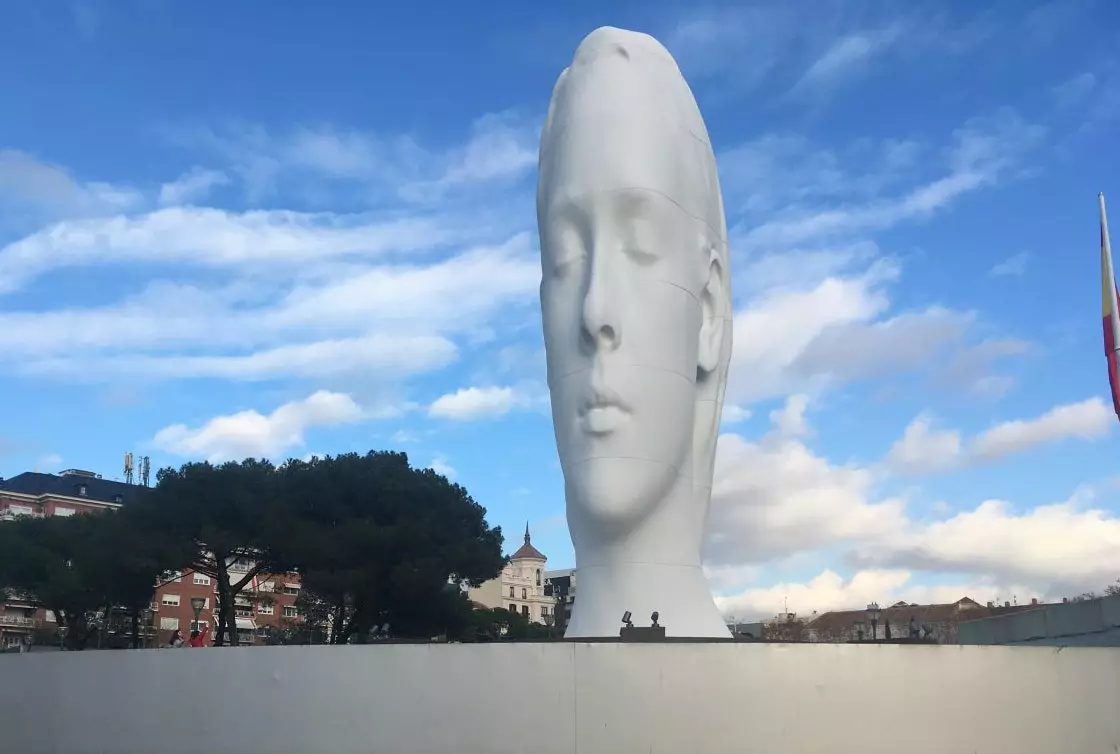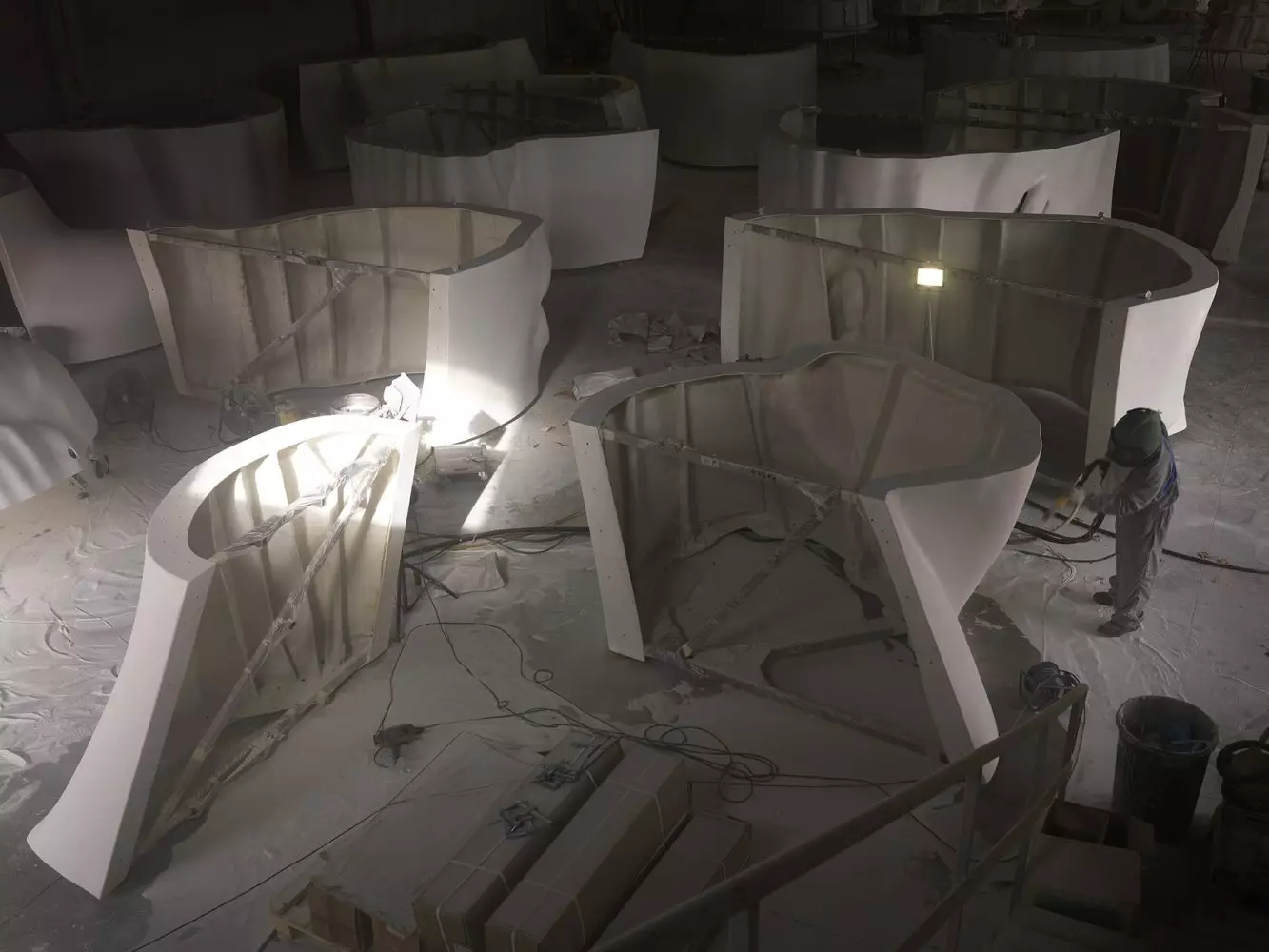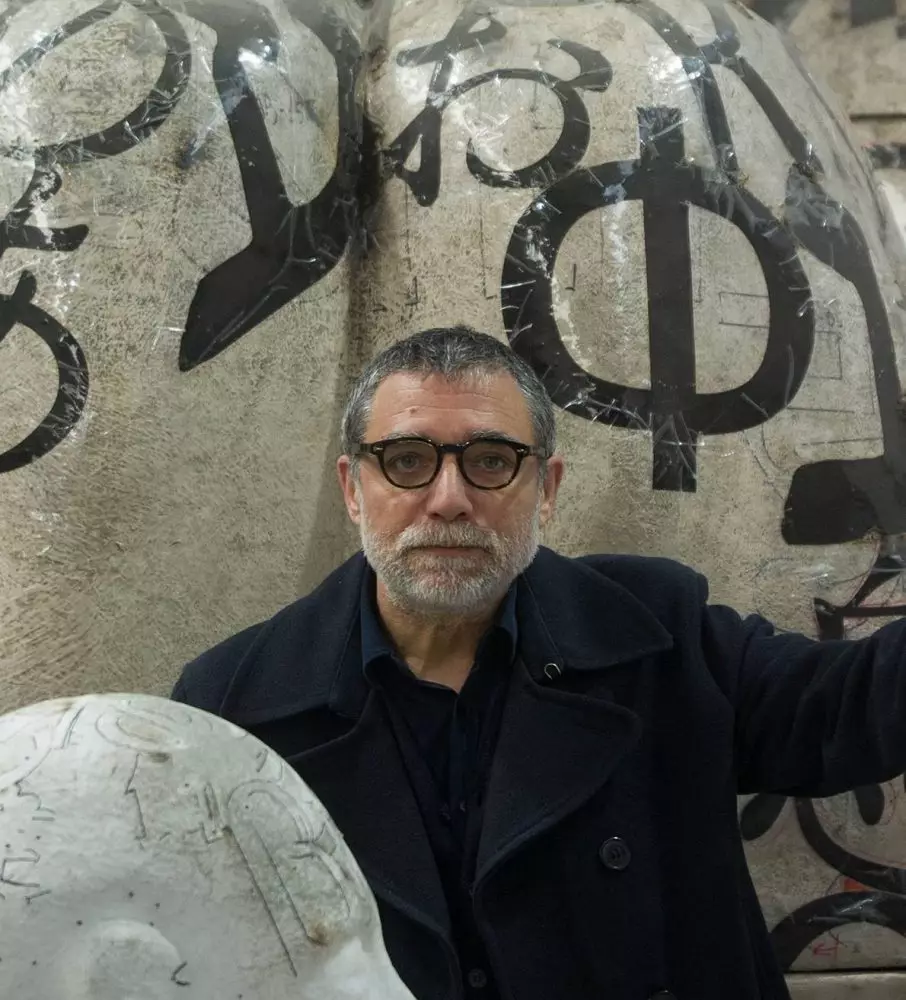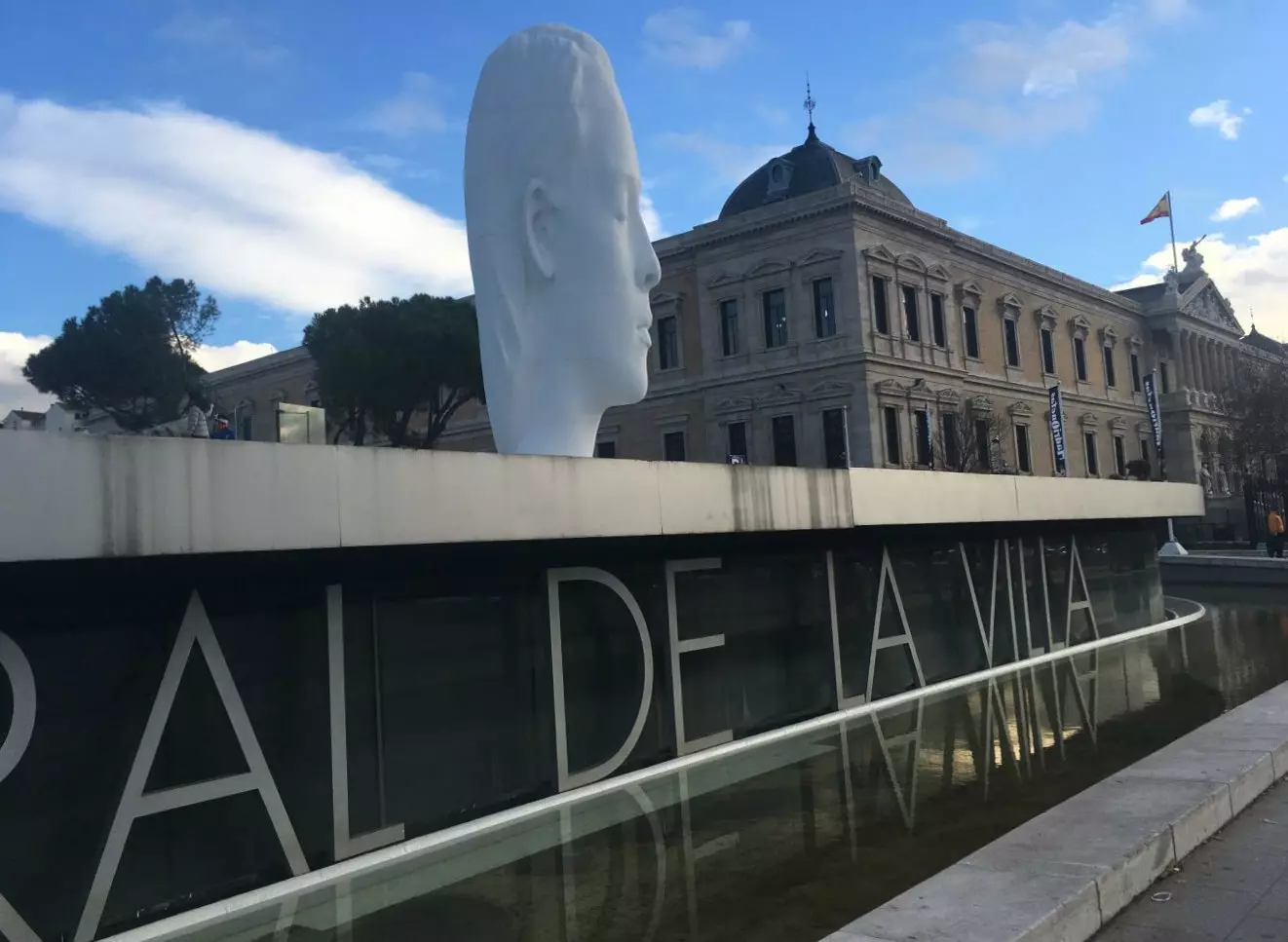
The girl Julia will occupy the pedestal of the Genoese sailor in the Plaza de Colón until December 20, 2019.
Updated on the day: 11/12/20. Julia arrived in Madrid's Plaza de Colón in 2018 to temporarily stay on the pedestal where the old statue of the Genoese sailor stood and now, the City Council has announced that she will stay a little longer. Specifically, one more year, until December 20, 2021.
Liverpool had its Dream in 2009, New York had its Echo in 2011, Alberta had its Wonderland in 2012, Venice had its Rui Rui in 2013 and, in 2018, Love settled in the town of Leeuwarden for the enjoyment of the Dutch . Madrid needed one of the recognizable and renowned **giant faces of the Catalan artist Jaume Plensa** to occupy one of our public spaces.

Julia is made of pieces of polyester resin and white marble powder.
The sculpture – 12 meters high – presents the appearance of a girl to, in the words of the artist, introduce a "little tenderness" in the place. Made of polyester resin and white marble dust, Julia, which "is directed at the heart of our being", has her eyes closed because, according to the Velázquez Prize for the Arts in 2013, "she seeks that each one express their hidden inner world ".
This unique piece, It is already part of the appearance of the square -in fact it was built expressly for it-, is part of an artistic program organized by the Madrid City Council which, under the patronage of the María Cristina Masaveu Peterson Foundation (FMCMP) during the first three calls, consists of showing an artistic work (selected in public competition) in this same place during a whole year.
In fact, that Julia extend her presence in the Plaza de Colón has been possible thanks to an agreement between said foundation and the Consistory, through the Department of Culture, Tourism and Sports.

The plastic artist Jaume Plensa considers himself above all a sculptor.
The plastic artist Jaume Plensa considers himself mainly a sculptor, but he also stands out in other artistic fields such as poetry, which is why we wanted to reproduce the beautiful words with which he describes the project that shaped Julia:
"No one has ever seen her own face directly.
We think we know it thanks to the uncertain image that mirrors give us back.
Our face is a doubt that will always accompany us.
A doubt that we generously offer to others as the most faithful document of who we are... of what we believe to be.
Each face represents us all.
Thousands and thousands of faces intertwined like words, like landscapes.
Like dreams.
I, you, he, she... The face belongs to all of us. It is the common place that makes us a community, in which we speak all languages, in which we feel loved.
Julia is addressed to the heart of our being.
It is a poetic and virtual mirror in which each of us can see ourselves reflected in her most intimate questions:
In what and how can we improve the lives of those around us? How could we help those who lose their homes or jobs?
How to be useful to those who are looking for a new home fleeing their country?
Would there be any way to stop hunger, war or violence of any kind?
To what extent should children be educated to create a more just and tolerant society?
etc. etc. etc.
So many faces, so many questions...!"
James Plensa

Julia on the Fernán Gómez Theater. Villa Cultural Center and in front of the National Library.
